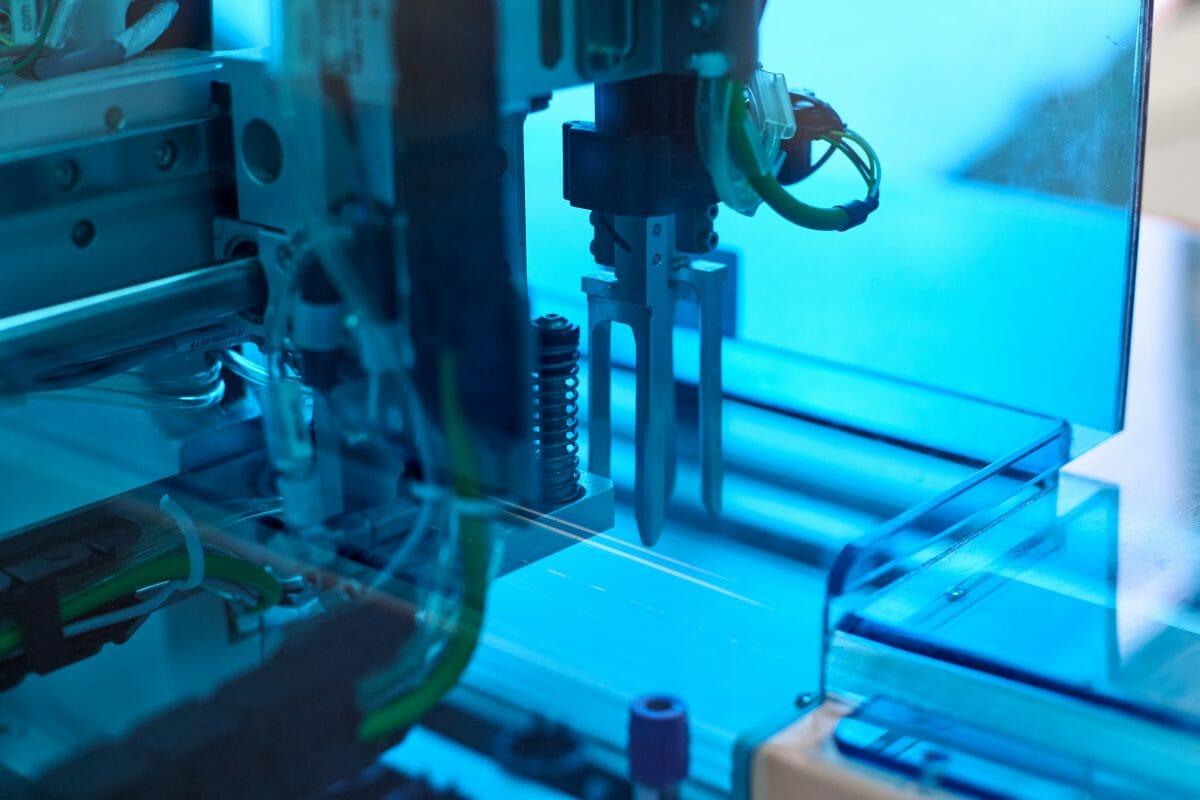In today’s rapidly evolving business world, some trends, like automation, are proving more challenging for businesses to ignore than others. As of its surge in popularity, an estimated 432,000 UK businesses have already implemented AI strategies because of all the benefits it promises, with many more expected to follow suit in the upcoming years.
Since becoming a trend, automation has played a vital role in reducing costs, improving efficiency, and increasing accuracy across various sectors, including laboratories using technology and robotics. Although not a straightforward process, implementing lab automation in your workplace can revolutionise how your staff handles data, conducts experiments, produces results, manages samples, and more.
While switching from an entirely manual process to a laboratory-automated process might sound like a terrifying prospect, with the proper knowledge, a revolutionised workflow is closer than you may think. To help you make the switch, we outline several tips in our article below, from determining your laboratory’s needs to researching automation technologies – keep reading to find out more.
Determine Your Organisations Goals/Needs
The first wrung on the ladder of laboratory automated processes is outlining your organisation’s needs/goals and how implementing automation can help you achieve them. For instance, does your laboratory often receive praise for the quality of your services and the hard-working approach your staff members have, but your turnaround times could be improved?
If this is the case, your roadmap towards laboratory automated processes should focus on how automation could help increase worker efficiency and which technology/tools will best help you achieve it. Or could your areas of improvement lie in data collection and analysis? Sample handling? Or even tedious, everyday tasks that take up precious time and resources?
Regardless of your organisation’s goals/needs, it is essential that you understand them before implementing any new technologies or tools so that you can make informed decisions. Failure to identify them could lead to costly mistakes and wasted time, highlighting the urgency to choose the proper automation solutions that align with your laboratory’s goals/needs.
Research The Different Types Of Automation Technologies/Tools Available
Once you understand your laboratory’s needs/goals, the next step towards laboratory automated processes is researching the different types of automated technologies/tools available. Depending on what you feel is best for your organisation, you can find many automation technologies/tools, from using automated tools to make quantitative chemical analysis methods like titration quicker to using robotics to carry out complete reactions without human interference.
For instance, if one of your goals is to switch from manual to automated titration so that your lab can benefit from the improved accuracy, reliable results, increased safety, and time-saving benefits automated titration provides. Consider researching the kinds of automated tools that will help facilitate this switch, like the ones available from Metrohm.
From fully automated potentiometric titrators to automated liquid handling, they have a variety of automated solutions that can help your laboratory automate loads of different areas. Consider visiting their website to browse their entire product catalogue, request a quote, find your nearest sales rep and more. Or contact a team member directly for specific inquiries, and see how their automated solutions could help your laboratory transition from manual to automated today.
Start Small, Then Work Your Way Up
Let’s face it; switching from a manual to an automated process can be daunting, so there’s no reason to jump straight into the deep end and overwhelm yourself. Instead, it is best if you start slowly and then gradually work your way up to more automated solutions as each proves successful. Start by choosing a process that is easy to implement without causing too much disruption to your day-to-day operations, like project management software.
Equipped with project management software, your organisation can easily manage all your team’s assignments in one online space, which makes it easier for your team to meet deadlines, increase efficiency, and much more. Some automation tools in project management software help you monitor critical aspects of the project and alert you of any potential issues like the following:
- A missed deadline
- A delay
- An overloaded resource
- Or a change in the direction of the project
Since project management software is invasive, it won’t get in the way of staff carrying out their day-to-day tasks, and as a result, they should get used to it quicker. It will also allow you to monitor benefits, identify areas of improvement, and see what could be changed before implementing another process.
Enlist The Services Of Automation Experts
Another way you can take the first steps towards successful lab automation in your workplace is by enlisting the services of automation experts. No one says you must suffer in silence if you struggle to switch from manual to automated processes! You can find a variety of automation experts that can help your organisation make the switch and even manage the transition from start to finish.
They can help you with system integration, provide expert industry knowledge, educate you about upcoming trends, provide technical support, offer training, and much more, which can help make the transition easier.
However, these benefits depend on which automation experts you decide to partner with, so ensure that you do your research beforehand and don’t partner with the first one offering their services to you to ensure you don’t miss out on any perks that could benefit your organisation. Instead, choose one that you can foster good communication/support from the beginning to the end.
Educate Your Staff About Automation
Without educating your staff about it first, you won’t get very far on the ladder towards lab automation processes! To succeed in this endeavour, you should involve all your team in the implementation process and train them on any identified skill gaps.
In this training, ensure your team understands the benefits of automation and absorbs the information needed to operate and maintain the technologies, tools, and systems you implement. Throughout the training process, you should foster a network of open communication and ensure that all staff members’ queries are heard, as their feedback could be beneficial for ensuring a smooth transition into an automated future.


